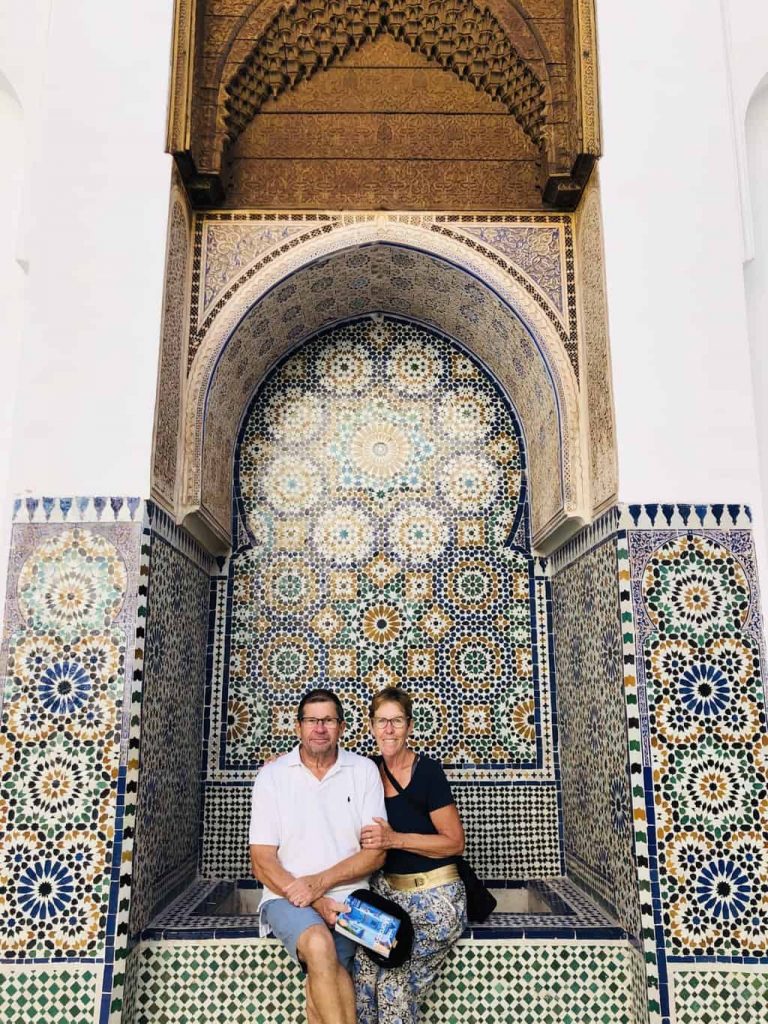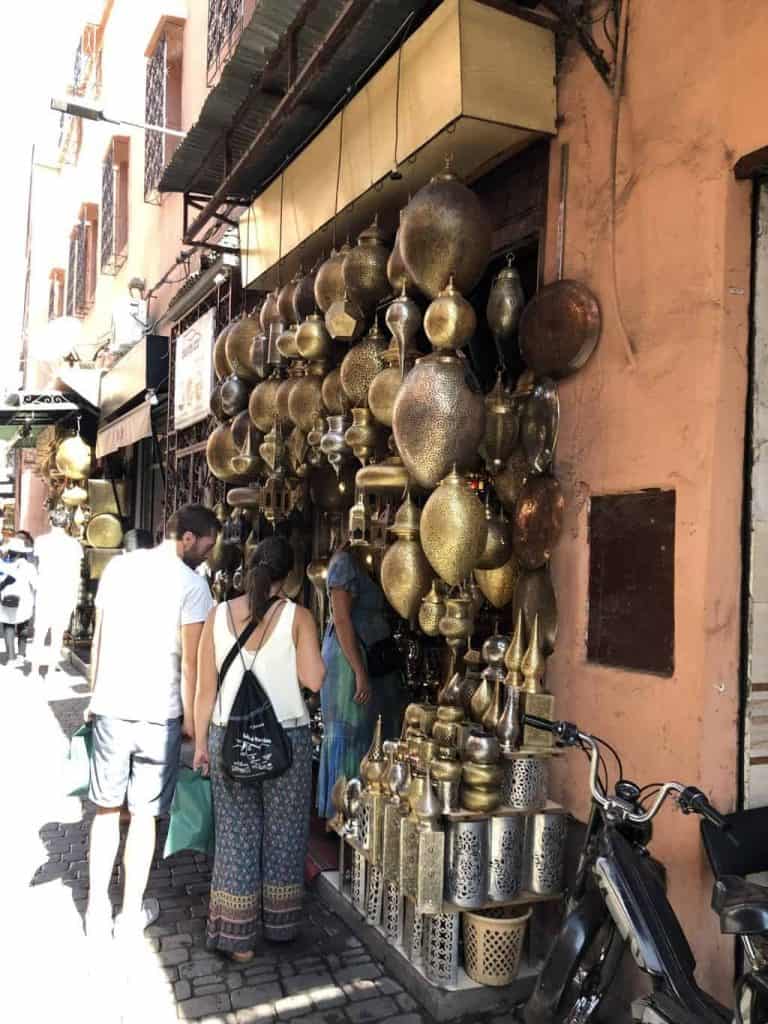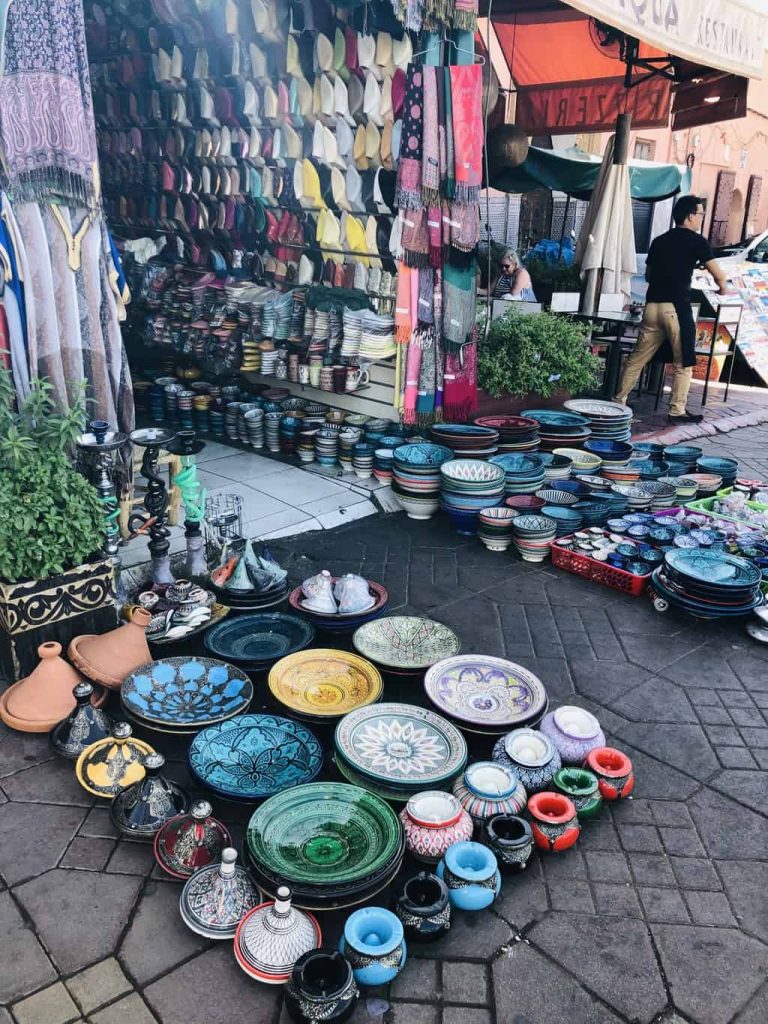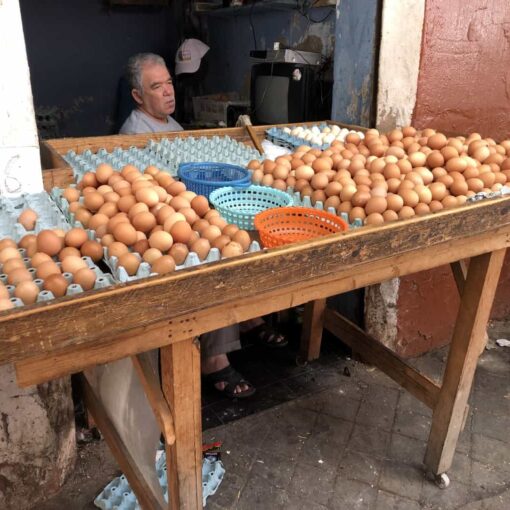Date: 21-22nd September 2019
Travelled: only by foot around Marrakesh
Visited: Marrakesh
Stayed: Parking Koutoubia Mosque €14, the usual services. N31.6238, W07.99534
Budget: xx days @ €xx per day
Marrakesh, Marrakech-Safi ⵎⵕⵕⴰⴽⵛ-ⴰⵙⴼⵉ مراكش-أسفي, Morocco
Map of Marrakesh, the icon on our overnight parking spot.
Locally known as Marrakech, international as Marrakesh, our guide book describes it as the heart of Morocco. Rabat is the administrative capital of the country, whilst Marrakesh has shared that honour several times over the past thousand year.
We went for a short wander last night, firstly for a cash machine (in Morocco cash is King, no one takes a credit card) and secondly for something to eat. Koutoubia Mosque parking is expensive by Moroccan standards, but it’s like parking your motorhome adjacent to the Sydney Opera House when it came to being amongst the action.

Marrakesh has been an in-place to be seen since the 1960, The Beatles, The Rolling Stones and LED Zeppelin have all lived here for a period of time although I doubt they can remember it. Our plan for today is to walk our guide books half day tour of the Medina. Breakfast done we walk across into the Medina to find the starting point.







We visit a fountain that is not worth a photo and a garden that’s currently closed for renovation when we reach our last stop the Maison de la Photographie. It’s a lovely old riad (house) which has been converted into a photo exhibition. It has a wonderful series of photos from the the 1870-1960. Your not supposed to take photos of the photos, but purchase a copy.
We discover by chance they have a shaded roof top cafe above the gallery, the height capturing a cool breeze on a hot afternoon in Marrakesh. We share the chicken pastlla and Moroccan salad, by far the best food we have enjoyed on our Moroccan adventure to date.
We return to the Hymer via the Carrefour for some fresh fruit and a bag of ice. We have some recuperation time, before drinks as we watch the shadows extend to the early evening and the call to prayer sound again. So it’s leftovers tonight as we are too comfortable to return to the heat outside.
Our second day starts with a short walk to the Bahia Palace in the southern Medina. Entry is €7pp for foreigners, €1 for Moroccans. This seems to be the standard price for all government maintained museums to date.








The tombs are done and so are we. It has been another long walk and the weather app tells us it’s 36 degrees. Pam has her eye on a couple of scarfs so we wander back through the Medina. Despite its complexity we can make our way with relative ease, which saves a lot of time. If you look lost people will try and engage you and offer to help, obviously for some small fee and to take you via their friends shop. It’s all a bit of a game. But look like you know where your going and they leave you alone, save a lot of time saying no (3 times).

We are back in the Hymer by mid-afternoon, luckily enough someone left the air-conditioner on. We have a very late lunch of English Jacob’s cream crackers (identical to an Arnott’s Sao in Australia) with Spanish ham, French cheese and Moroccan tomato and avocado. Wash down with some Portuguese beer and wine. After a nap we go for a walk on sunset but Marrakesh is done.
Michael and Pam




























One thought on “Marrakesh, Morocco 🇲🇦 2019”
Hi guys,
Following your adventures in Morocco. Great photos. Was stunned when I read that you drove from Meknes to Marrakech, must have been a long day. Enjoy Morocco keep up the great blogs.
Cheers Ewout and Jenny